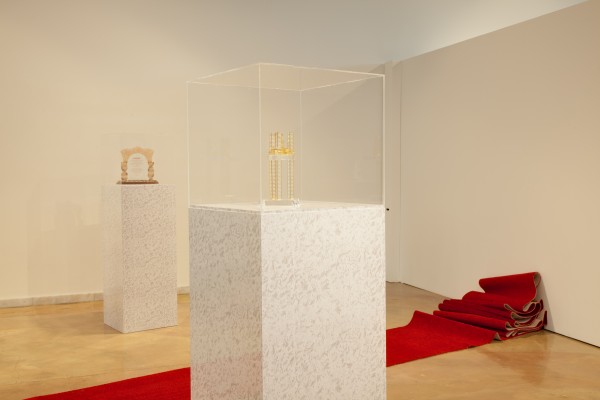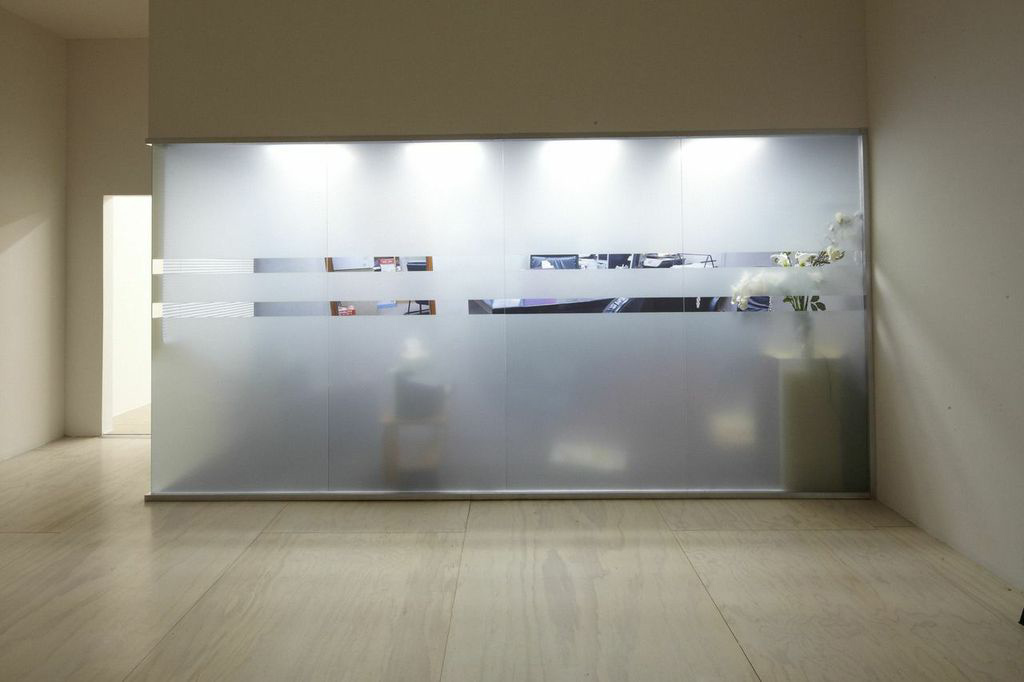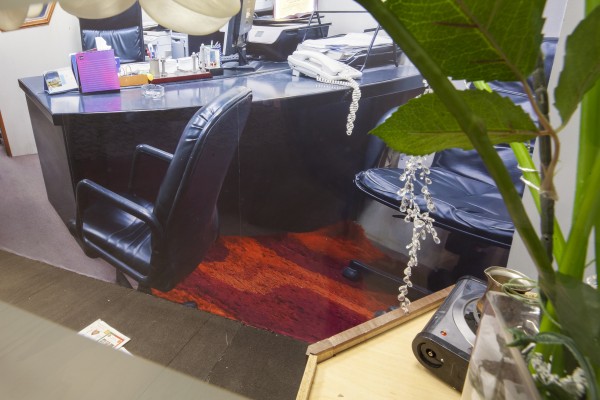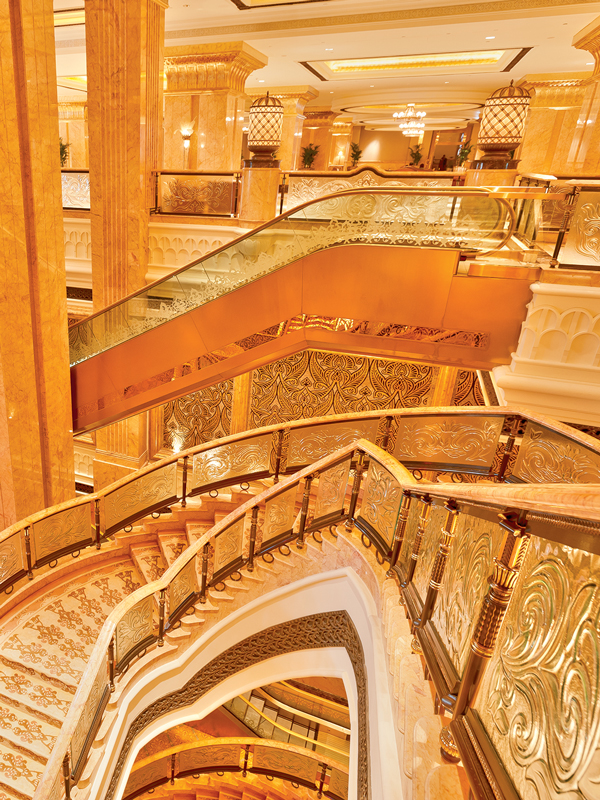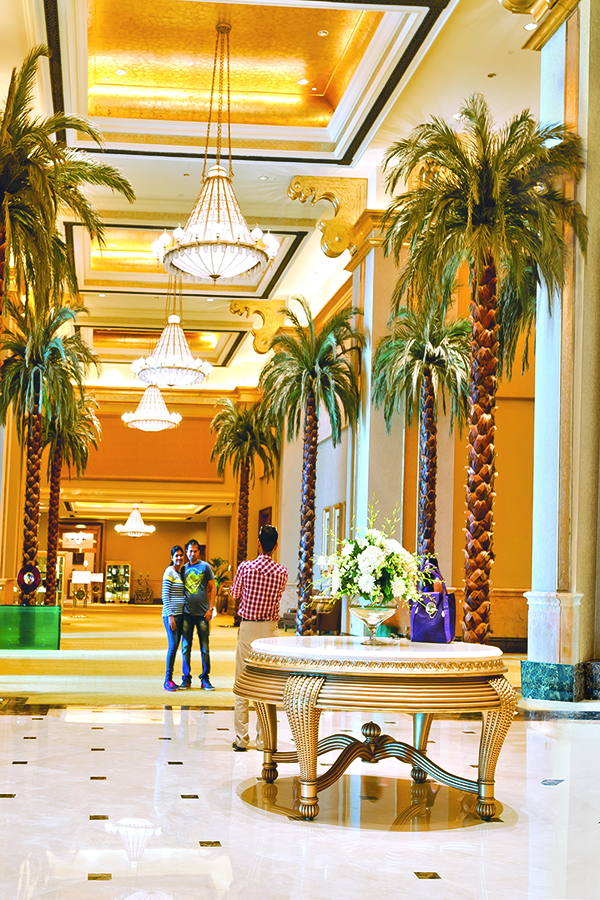The Aesthetics of Nation Building
Keywords: A Space for National Achievement, Abdullah Al-Mutairi, Akaram Zaatari, Amal Khalaf, Arab Gulf, Arab Image Foundation, Austro-Hungarian Empire, Aziz Al Qatami, bahrain, Barrak Alzaid, chris lew, Christopher Y. Lew, Dubai-ification, fatima al qadiri, GCC, instagram, khalid al gharaballi, Kuwait, Kuwait Pavilion, Lebanon, London, MoMA PS1, Monira Al Qadiri, Nanu Al-Hamad, New York, Paris, Peninsula Shield, qatar, saudi arabia, Sultan Gallery, Venice Biennale, Walid Raad, WhatsApp, Whitney Museum, Whitney Museum of American Art, YouTube
The artist collective GCC has been making work that is both inspired by and addresses the contemporary culture of the Arab Gulf region. Comprised of eight delegates—Nanu Al-Hamad, Khalid Al Gharaballi, Abdullah Al-Mutairi, Fatima Al Qadiri, Monira Al Qadiri, Aziz Al Qatami, Barrak Alzaid, Amal Khalaf—the GCC is named, in part, after the intergovernmental body that helps bind the region. For their inaugural series of exhibitions, the collective focused on the notion of achievement, focusing on the rituals that mark accomplishment as well as the physical objects that embody them. They have created a series of Congratulants based on trophies exchanged in the Gulf as well as videos examining ribbon-cutting ceremonies and installations that reference the spectacular cities that have been recently constructed in the region. The GCC’s visual language is not one of irony or hyperbole, but rather a way of framing culture that reveals the ambiguity and nuance of how people live today.By utilizing new mediums like HD and 4K video, in addition to appropriating traditional forms like news radio and miniature model building, the GCC span a range of artistic practices. They are rooted in the legacy of identity politics while engaging with new ways of relating images and objects. With members trained in architecture, design, music, and of course art, the collective embraces an interdisciplinary way of working that produces works that are both coherent and concise in their concept and execution. They make use of visuals that are largely known to the late-capitalist consumer—advertising and brand management that is employed by global business and nations alike.
Christopher Y. Lew: How did the GCC come about?
GCC: Our members have worked together on publications, exhibitions and biennial projects, so our collaboration stretches back for some time. In early 2013, a group of us were asked to submit a proposal to the first Kuwait Pavilion at the Venice Biennale. We understood that the pavilion would need to negotiate national interests, so that subject was already at the forefront of our conversation. The project didn’t pan out, but we realized that we see eye-to-eye on most things, so the discussion about all of us working collectively started. We formalized it a short while later in the Art Dubai VIP lounge. The Venice proposal, which we titled A Space for National Achievement, became the basis of our first solo show at the Sultan Gallery in Kuwait.
CYL: Can you talk a bit about the process? How do you all worked together and develop the works and the exhibitions?
GCC: We have this vast collective image and idea bank that we’ve been building for a while without the right platform, and GCC, with our combined skills, makes it possible to utilize this. There’s a lot of conversation, constantly, 24 hours on WhatsApp and in person through global summits. So far we have met in Switzerland, Kuwait, and New York. On WhatsApp, half of the dialogue is about real work and the other half is just people having conversations about god knows what. These random conversations have generated things as well though, so, in a way, they’re both work-related, but the summits are where we really develop our projects.
CYL: The ideas come from the conversation?
GCC: There’s a lot of image sharing, YouTube videos, screenshots, and very important Instagram research.
CYL: I realized we haven’t discussed what the GCC refers to.
GCC: The letters are not what convey the message; it’s not an acronym for us. We look at the word GCC as an image, like a .jpeg file, not as a text. What is also nice about the name is that it’s an acronym for so many things. It keeps it extremely anonymous. It could mean Glendale Community College or Grupos Cementos de Chihuahua. It gives us a bit of a shield so that we are not just referencing political bodies. Though it has been interpreted that way.
For example, when we did A Space for National Achievement at The Sultan Gallery in Kuwait, the audience was much smaller than we expected. We found out from a major collector that many of her collector friends avoided the show because they thought it was an actual GCC-sponsored event. We were kind of happy with that. It was flattering. We conveyed the information we wanted to convey. Maybe it was too accurate.
CYL: You’ve said before that you are examining the contemporary culture from the Gulf region. Can you elaborate?
GCC: Most of these countries invest a lot of money and resources into branding: there’s the image they project internationally and then there’s the one that is understood within the country.
They have an interest in representing the Gulf in a certain way. And it becomes a very homogenous image somehow. But there are environments, aesthetics, and rituals happening around us that are so alluring and need to be addressed.
From the beginning we were always interested in invisible aspects of the culture. Invisible based on how easy it was to find on the internet, that’s how we characterize it as invisible. These rituals and processes are somehow everywhere, yet under the radar, taken for granted, not examined, not addressed in any kind of way that is not literal. They are not important enough for Instagram, or at least not in a central way.
For example, why is the ribbon cutting ceremony, a relic of the Austro-Hungarian Empire best convertible car seat, so important right now, right here? Or the culture of the red carpet ceremonies, coming from America, from awards ceremonies like the Oscars. That actually comes from Rome or Ancient Greece, but celebrated through pop culture. These objects and rituals start to play a role in our work, and when you look at them from a bureaucratic or governmental level, you start to connect what’s going on in the Gulf with what it means to live in a situation that’s super neo-liberal/feudal.
In the present state of Gulf countries, the State itself becomes a brand, a corporation, so it’s also about this merger between late-capitalism and this very old tribal state. It’s about how these things merge and create new languages. If you look at the subject matter we’re playing with here—if you put it in a vacuum, without context—they become something the whole globalized world can relate to, but what we’re interested in is this process where it passes through a sort of filter and becomes something of a vernacular.
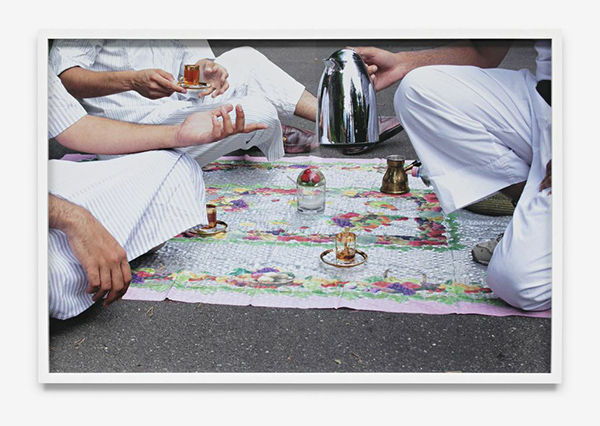
Inaugural Summit, Morschach 2013 7 (exhibition view), 2013. From Achievements in Retrospective at MoMA PS1.
Photo: Matthew Septimus
CYL: Which the GCC conference table does in a physical way.
GCC: It’s glaring in a way because that table is a frankenstein. Because of where the motifs come from; ideas of officialdom and luxury and all these things and how they transform the look of that table. It’s a key reason why we are concerned with the ephemeral as it relates to experience and architecture. So many of these symbols of power, of authority, are mediated by architecture. This hexagon gets remade for each GCC summit which is held in a different country and it’s always so opulent. The delegations sit behind it. The hierarchy is set before people even walk in the door. That’s something that’s been interesting to us, how environments shape collective and individual experiences. Just the way that the decorative aspect of officialdom is managed through some hazy memory of something, of an Empire table someone saw in France, a boardroom meeting chair, the proportions of a banqueting hall, all of that merging and creating something new.
CYL: Moving the conversation in a different direction, I have been thinking about the Arab Image Foundation, a collective started by Walid Raad, Akaram Zaatari, and other artists. In the late ’90s, the collective was using photography to deal with the history of Lebanon and the loss of memory through the civil war. Here you are as a different collective, very much of the 21st century, dealing with a project that’s not dissimilar, focused on specific regions and their respective contemporary concerns.
GCC: The urges are similar. Lebanon, which suffered through an event, a singular event which was the impetus for that project. For us it’s a continuation, a historical timeline, an ongoing thing, and we are interested in these objects and aesthetics because of that. For Lebanon, a lot of the ideas are about the past, memory, and things like that, while we’re trying to deal with the future and the present. It’s a different way of looking. But you could also think about the past while viewing our work. Or you could relate it to politics, the extended reasons why these things exist. We’re not directly going to talk about the past. We want to talk about now and why now exists.
One thing that is fascinating for us about the region is that there are parts that are encased in dust, where aesthetics have been frozen in time. Materials have been frozen in time. They have miles of dust on top of them and are unshakeable. Then you have rapid acceleration, the corporate “mall-ification” of this region, which is spiraling out of control. The “Dubai-ification”. Every time you go back there are new words, new practices. Your grandma is on Instagram. You can’t keep up. As someone who is away from the region and comes back, you feel left behind; people are already way ahead of you. There are new rituals. But then there are parts of the region that just won’t change, like the Edith Piaf song played at the Ministry of Defense. During the Kuwait show, a friend came to the exhibition. There was this music from a YouTube video we found, which included a ribbon-cutting segment, and which we used for a piece in the show. Our friend works for the Ministry of Defense and he said “This is my life, every day.” That particular music is played in the lobby of the Ministry of Defense, just incidentally. This type of example goes back to earlier attempts at modernization, especially in places like Kuwait. Just this summer the Kuwaiti government started using e-mail, for internal purposes. Everything will probably get printed out anyway, and stamped. And that’s part of what’s interesting too, these governments and bureaucracies are capable of such scale and yet are still mired in the Jurassic trappings of bureaucracy.
There’s obviously the dichotomy of the dusty and the highly developed, and how those can exist together. But there’s also places and aspects of the culture within Kuwait, Bahrain, Saudi Arabia, and Qatar which are not necessarily part of this storyline. There’s the land reclamation in Bahrain in particular. There is the way in which the specific timeline of when oil was introduced in each country that defined and shaped taste, sensibility, architecture. And how later on…we don’t want to call it reverse colonialism, but how the Arab Gulf has extended itself into places like London or Paris, and how that affects its relationship with Europe and the rest of the world.
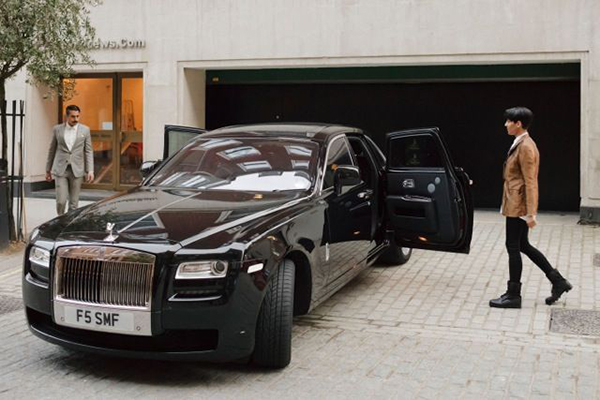
Chartered Cruise, 2013. Rolls Royce Silver Phantom 2013, sound, ephemeral/performance.
Photo by Joe Clark
CYL: I think that you’re poised between projects like the Arab Image Foundation, which revolves around the archive, and a way of making that is about future and present ways of disseminating images and objects.
GCC: Speed and velocity are important. We were talking about it as a group, trying to think that maybe it was about the element of time. In the CO-OP video, it is as if the past and the future collapsed into the present. We are creating encounters for the viewer. Creating these worlds that deal with elements of history and the present, and projections into the future.
If we accelerate this culture, what is the end result? If there’s an element of linear speed in this conversation then there needs to be a terminus for this journey. There is a beginning and an end, so what is that end? I think we’re hurtling towards the end. We’re trying to reach outer space or orgasm.
Another thing that is interesting about the rapidity of our trajectory is that it is mirroring what is going on right now in Dubai. This “we want to be number one, right now” attitude, in which “we want the future right now, there’s no time to waste.” It’s really strange that it turned out this way. So we’re kind of representing this acceleration that’s really happening in the Gulf, architecturally and culturally. At the beginning, we were trying to reflect reality, but now reality is reflecting onto us.
CYL: Language also is important to what you are doing. It doesn’t just create context for the work but it becomes another material. Can we talk about how language enters the work, and how the GCC is presented through language as well as imagery.
GCC: We address language in the same way as the rest of our subject matter. For us, it is a comprehensive subject or source, and we approach it in a very similar way. We appropriate and re-contextualize this language. Again, like how these words exist, if they’re taken out of the GCC context, they can be relatable to everyone else. Especially the use of English, a language that has been imported, but here it has passed through a filter and has become something else, something local.
CYL: The titles of your work relates to that.
GCC: Most of the writing we’ve done is in this way, a kind of culling, and a kind of collage. We are also moving towards more abstract language, the language of PR, the language of selling real estate, language of selling leisure and lifestyle options, the language of the performance of labor. For example, the photographs of the Swiss summit are a universal language of government officials grandstanding and pretending to work. This is the result of the government acting like a corporation, using the same marketing tools. And the governments of the Gulf, in their own way, take as their guideline the rituals of foreign government bodies. That then trickles down and becomes our guideline.
When we think about the use of language in the work, it’s very similar to how a corporate entity speaks to its audience, this sort of business-friendly, PR jargon, but wrapped in a style that is super personal and private. It’s a performance in a sense. A lot of our work deals with reality as an illusion, this dream of a Gulf coastline, unrealized buildings, the performance of labor during government summits as well as the idea of a single unified Arab Gulf, which in reality, Qatar is now on the fringes of this cooperative because of one too many diplomatic stunts.
When the Peninsula Shield, which is the GCC military wing, suddenly came into Bahrain to storm the protest in 2011, we were talking about it, and thinking, “Since when is there an army, since when has the GCC as a body affected our life and our world?” That was a moment when we were discussing what that union is, how it makes sense, and what it would mean to have a union. Everyone knows that it’s a show union, not a real union. All this time everyone thought it was a defunct thing, not real. Then it became so real. It became real when the military arm manifested itself in Bahrain.
Though it is real in other ways, to think about it outside the context of where we live, there are millions of people who actually believe in this union. And taken at face value, their efforts, through the use of soft power, have wrought some sort of result. By producing these regionalist pop songs and media productions and things like that, people have grown up on it. It’s a reality for a lot of people.

GCC’s AHLAN! “Scent of Achievement” soap bar, Now available for purchase on DISown!
CYL: What lies in the future?
GCC: This is a question we’ve been asking recently. This year we don’t have a second to breathe. Ideally we would like some reflection. We need another summit like the Swiss summit—where we were removed from an urban environment—and are stuck and simmering in a jungle or on a mountain.
CYL: So you mean vacation? [laughs]
GCC: Yes. What was really successful in Switzerland was that there was a lot of cured meat and alcohol. We have so many other proposals we want to do. We want to do a film…It’s about deciding what we want to do, maybe outside the context of a gallery or a museum show.
Christopher Y. Lew is Associate Curator at the Whitney Museum of American Art. He is the former Assistant Curator at MoMA PS1 where he organized GCC: Achievements in Retrospective.

